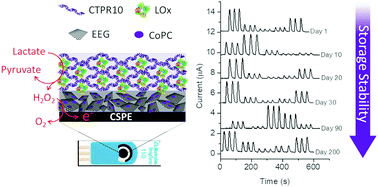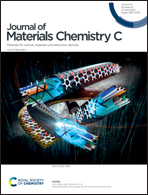Protein-based (bio)materials: a way toward high-performance graphene enzymatic biosensors†
Abstract
Enzymes are ideal receptors for biosensors since they offer excellent selectivity and high catalytic activity. However, once removed from their native environment, enzymes present a short lifespan determining a huge drawback for their application in bio-analytical systems. The use of appropriate immobilization matrices is an effective strategy to preserve enzymatic activity. In this work, an enzymatic amperometric biosensor is designed by entrapping lactate oxidase into a protein-based immobilization matrix, formed by the self-assembly of engineered repeat proteins. Electrochemically exfoliated graphene, functionalized with cobalt phthalocyanine, is employed as electroactive material and transducer of the sensor. Due to the extraordinary enzymatic stabilization provided by the engineered protein film, the device sensitivity is preserved for more than 6 months at room temperature. Furthermore, the presented biosensor can detect lactate with outstanding performance in terms of sensitivity, repeatability, and reproducibility.



 Please wait while we load your content...
Please wait while we load your content...